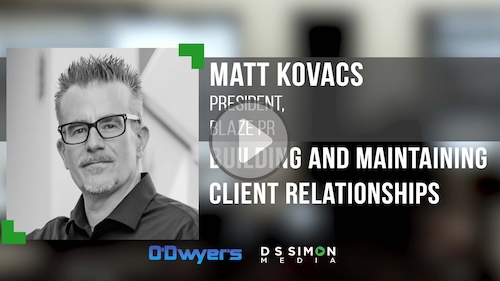What if you had a PR client who couldn’t sing or dance or play an instrument, wasn’t the brightest bulb in the chandelier, and lacked any semblance of articulateness -- but nonetheless, one day found himself on late-night television with Jimmy Kimmel, the host of his own national TV show, and the model for a bobble head doll fetching $400 on Ebay?
Welcome to the upside down world of Toronto mayor Rob Ford, an unknown Canadian politician six months who, today, is a household name in the United States and around the world.
The reason, of course, for mayor Ford’s sudden spurt in global recognition is, briefly, his acknowledgement, after months of denial, that he bought and smoked crack cocaine and his refusal to relinquish his political post.
Ford’s denial and cover up of his crack use, his refusal to step down and seek help, and his adamant campaign to remain in office because “that’s what the people want” violates every principal in the crisis management handbook.
Traditional crisis management advice for the wayward Toronto mayor is simple: “Mr. Mayor, if you want to preserve one shred of dignity, salvage at least a part of your declining reputation, you must immediately:
1. Resign
2. Go to rehab
3. If you wish, make a political comeback later.”
Ford’s reply to such sage counsel: “Go stuff it!”
Literally translated: The mayor ain’t goin’ nowhere, and nobody can make him.
And despite violating every PR rule known to man or woman, the clear -- albeit, puzzling -- conclusion is that Rob Ford is winning; he is still mayor.
So now, that crisis managers the world over have been spurned by the crack-smoking mayor, what can be done to solve this crisis? For make no mistake, Toronto and the Canadian political system stand knee deep in “crisis.”
For one thing, the proud city of Toronto has become an international laughing stock, the subject of regular ridicule on the net and airwaves around the globe. It used to be San Diego, which was ridiculed, because it possessed a serial-groping, law violator as mayor. But that miscreant, a loathsome character named Bob Filner, finally stepped down, leaving Toronto all alone in the scandalous mayor spotlight.
For another, Canada’s political system, which that country’s politicians defend, as based on the “rule of law,” has been exposed as more like wacky, bordering on ridiculous. Specifically, neither Toronto’s City Council nor any other Canadian politician evidently, has the authority to remove an erring mayor, no matter what the office holder might have done to demean his position.
Finally, no one is experiencing greater “crisis” than Ford, himself. The Chris Farley lookalike is now subject to daily, on-site onslaught, not only from Toronto’s media but from a worldwide press corps. And while perhaps a person of stronger constitution could take this kind of daily barrage, the tortured Ford clearly can’t.
The fact is while Ford claims he will stay in office till his term ends next October, it’s unlikely that he will survive the daily media gauntlet through which he must navigate.
So what now, crisis managers?
Here’s what.
Ford should volunteer to take a “temporary leave of absence” from his position and check into a rehabilitation clinic. While San Diegoans (San Diegans?) correctly wouldn’t permit the slimy Filner to escape this easily, Toronto’s city fathers would be delighted with such an outcome.
As noted, the city’s – and country’s – political system has already revealed its impotence to deal with the Ford problem. By all rights, Ford should have been thrown out months ago. But since didn’t happen then and won’t now, a “leave of absence” would be a realistic compromise solution.
Once the mayor departs for rehab, the spotlight will diminish, the international media will return to harass some other poor soul, and Toronto can go back to being the “Queen City” rather than the “Crack City.”
Then, after 30 or 60 days, Rob Ford can return to the constituents who “want” him, hopefully cleaner, wiser and free from crack.










 Have a comment? Send it to
Have a comment? Send it to 
No comments have been submitted for this story yet.